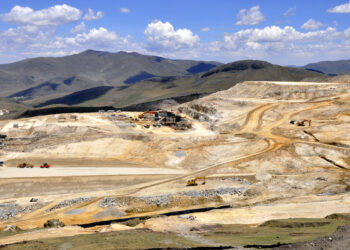In this technological age, with new possibilities emerging seemingly every day, the future of mining is difficult to predict. Yet there are several movements which are already having a significant impact on the industry.
From increasing sustainability to improved underground safety, Mining Technology takes a look at three emerging trends for the future of mining.
Sustainability
Sustainable practices are often at the core of a mine operation’s license to practice, with an increasing number of sites realising that they must be both environmentally-friendly and socially-responsible in order to survive.
Moving forward, this requirement for sustainability in the mining industry is set to increase. As resources diminish and global focus on the environment intensifies, many mine operators are finding they must ‘up their game.’
According to Jukka Ristimäki, product line director of new technologies at leading underground equipment provider Normet: “It is an especially interesting time for the industry, and our customers are at the beginning of the journey. From what we can see from emission regulations and EV incentives in different countries, there is a worldwide push towards being more sustainable and Normet wants to be at the forefront of that change.
“Sustainability, automation and digitalisation are going to have a big impact on the industry moving forward. Technological development at Normet is focusing on these categories.
“The battery electric vehicle architecture we have launched called SmartDrive is one example. Using the latest lithium-ion battery technology will help our customers to accomplish these emerging trends, particularly improving sustainability. The benefits of battery systems in underground environments are quite obvious.”
The Internet of Things
A term used to describe the connection of machines, devices, sensors, appliances and equipment to the internet, the Internet of Things (IoT) has great potential to transform the future of the mining industry.
By allowing mining sites to collect huge amount of information about equipment and operations in real-time, IoT has the ability to make operations more efficient, productive, profitable, sustainable and even safer. Ultimately, these internet-connected sensors come with great benefits to the mining industry and, according to recent statistics, more and more operators are discovering the potential.
Research by Vanson Bourne suggests that 70% of the world’s 100 largest mining companies believe that IoT could give them a significant edge against competitors, with almost half suggesting it could be used to identify cost saving opportunities.
While a rising number of firms understand the benefits of IoT, uptake of this digital development has been slow. But as the technology develops further, IoT is becoming increasingly available and more affordable to implement on a large scale.
Underground technology
As mining equipment becomes safer, the industry is likely to see an increase in improved technology underground.
According to Ristimäki: “There are a couple of challenges that could emerge in the future for mining. Generally, the more easily mined resources have already been found and used so customers are having to go deeper to reach the orebody. That brings a range of opportunities for mining operators, including the use of battery electric vehicles to minimise the required ventilation and cooling.”
For example, earlier this year, Normet unveiled battery electric emulsion charging unit for in underground environments. Using their Charmec MC 605 VE SD, the battery powered charging equipment improves the explosives charging process by making it safer and more efficient, allowing it to be charged solely on battery power. Batteries can be recharged conveniently from the existing mine grid during the operation.
“This development complements Normet’s market-leading underground explosives charging offering,” says Ristimäki. “Normet’s charging equipment range has been specially designed with safety and mechanisation in mind, helping to fulfill the most demanding of customer requirements.”














